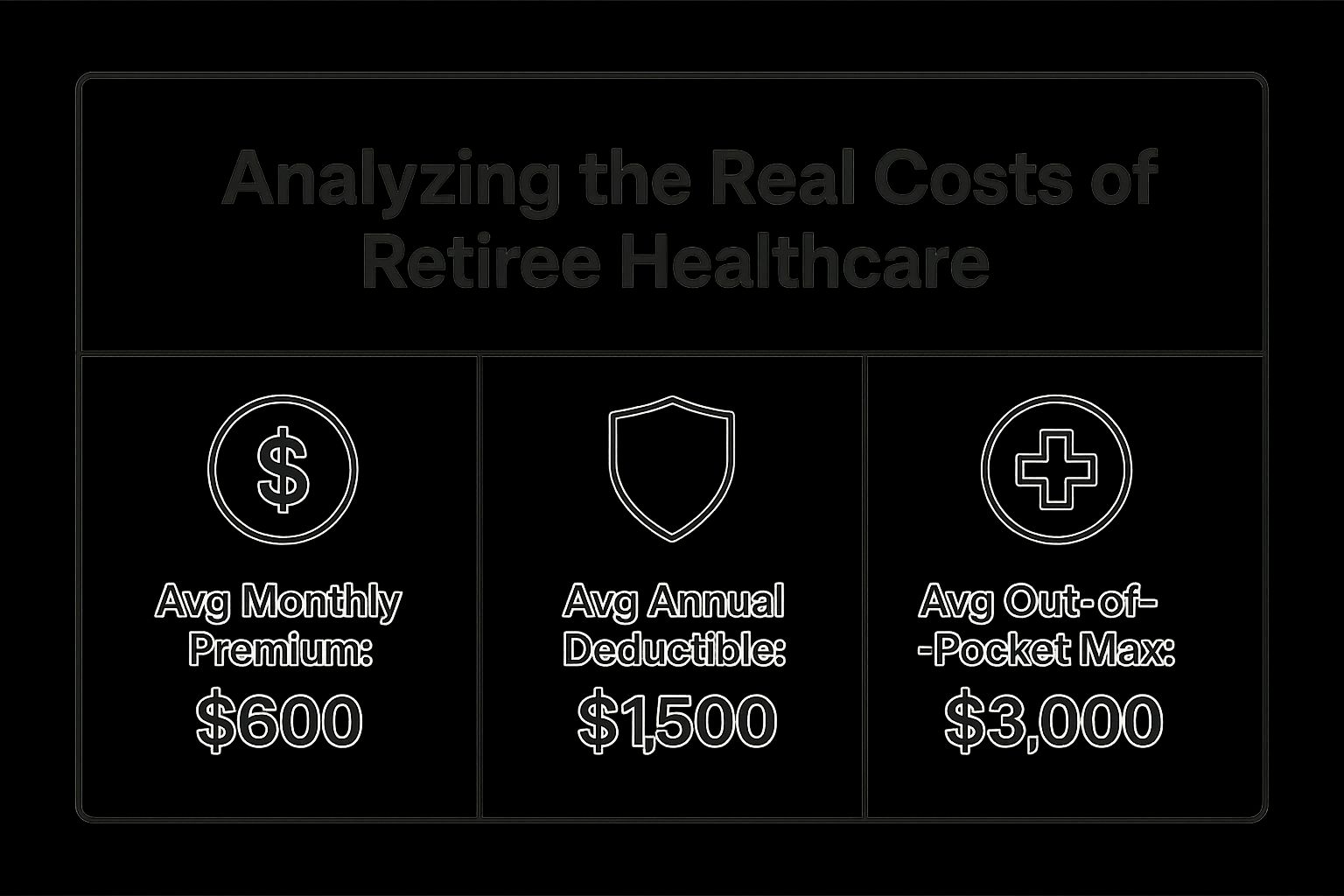Blogs

Blog title place here
We understand that every federal employee's situation is unique. Our solutions are designed to fit your specific needs.

Blog title place here
We understand that every federal employee's situation is unique. Our solutions are designed to fit your specific needs.

Blog title place here
We understand that every federal employee's situation is unique. Our solutions are designed to fit your specific needs.
Health Insurance for Retired Federal Employees: Complete FEHB Guide
As you gear up for retirement, one of the biggest questions on your mind is probably health insurance. For federal employees, the answer almost always circles back to the Federal Employees Health Benefits (FEHB) program. But here's the crucial part: you can't just decide to keep it when you retire. You need to meet the '5-year rule'.
This rule is non-negotiable. It means you must have been continuously enrolled in an FEHB plan for the five full years right before you retire to take it with you. Think of it as the key that unlocks this benefit for the rest of your life.
Your FEHB Health Insurance in Retirement

After years of public service, you've earned the right to keep your health coverage. The good news is that the FEHB program is designed to stick with you long after you've handed in your badge or cleared out your desk. It’s a benefit you’ve secured through your career.
But just because you can keep your plan doesn't mean your strategy should stay the same. As a retiree, you're playing a whole new ballgame. Your income is fixed, your health needs will likely change, and now you have a new player to consider: Medicare. Figuring out how these two work together is central to your financial well-being.
Understanding the Evolving FEHB Landscape
The FEHB program has always been a solid choice, but it’s not static. The menu of options is changing. In 2025, there will be a total of 130 plans available nationwide. That might sound like a lot, but it's a big drop from the 158 plans in 2024 and the 271 we had back in 2023. This contraction is partly due to big shifts like the new Postal Service Health Benefits (PSHB) program pulling postal workers into their own system.
What does this mean for you? It means you have to be more deliberate during Open Season. With fewer choices on the table, just letting your plan roll over year after year isn't a smart financial move anymore.
Preparing for New Costs and Choices
On top of a shrinking list of plans, retirees are also facing rising premiums. The government's contribution is still significant, but the increases have been getting steeper. A few years back, we saw average premium hikes of around 3.8%, but more recent years have brought bigger jumps. You can get a better sense of these trends by checking out the FEHB premium changes on fedimpact.com.
This is the new reality for retired federal employees, and it requires a proactive approach. Your goals have shifted. Now, it's all about:
- Maximizing Value: You need a plan that covers what you truly need without making you pay a fortune for perks you'll never use.
- Coordinating with Medicare: This is the big one. Understanding how your FEHB plan can wrap around Medicare Parts A and B is the secret to creating a powerful and affordable healthcare safety net.
- Budgeting Smart: You need a clear picture of your total healthcare outlay—premiums, deductibles, and co-pays—to make sure your retirement budget stays on track.
This guide will walk you through these moving parts, helping you build the confidence to make the best possible healthcare decisions for your retirement years.
How FEHB and Medicare Work Together

One of the biggest puzzles for federal retirees is figuring out how the Federal Employees Health Benefits (FEHB) program and Medicare can play on the same team. When you get this right, you create an incredibly powerful and affordable health insurance setup. Think of it like a dynamic duo. Once you retire and turn 65, Medicare becomes your primary coverage, handling the big stuff first. Your FEHB plan then steps in as the perfect partner, covering what Medicare doesn't.
This coordination isn’t something that just happens automatically; you have to set it up correctly. For most retirees, that means enrolling in both Medicare Part A (for hospital stays) and Part B (for doctor visits and medical services). This combination gives you a rock-solid safety net for just about anything that comes your way, from routine check-ups to serious medical events. Without pairing them up, you could be left with some surprisingly large bills.
Medicare Becomes Your Primary Insurer
The moment you’re retired and enrolled in Medicare, the game changes. Medicare immediately becomes the primary payer for your healthcare. This simply means that whenever you have a medical bill, it goes to Medicare first. Your FEHB plan then acts as the secondary payer, picking up the costs that are left over, like deductibles and copayments.
Let's say you see a specialist and the bill comes to $200. Assuming you've already met your annual deductible, Medicare Part B would typically pay its 80% share, which is $160. The remaining $40 is then passed to your FEHB plan. Depending on the plan you have, it might cover that entire $40, leaving you with nothing to pay out of pocket. It's this seamless handoff that makes the combination so valuable.
The core principle is simple: Medicare pays first, and FEHB pays second. This relationship is designed to minimize your out-of-pocket costs and provide nearly gap-free coverage for most medical services.
This shift in roles is precisely why your choice of FEHB plan becomes so critical in retirement. Many retirees discover they can switch to a lower-cost FEHB plan once they have Medicare, because its main job is now to supplement Medicare, not to be your one and only insurer.
The Critical Decision on Medicare Part B
While Medicare Part A is usually free for anyone with a long enough work history, Part B comes with a monthly premium. This leads many federal retirees to ask a very important question: "If I have my FEHB plan, do I really need to pay for Part B?"
For almost everyone, the answer is an emphatic yes. In fact, declining Part B can be one of the costliest financial mistakes a federal retiree can make.
Here's why. If you're 65 or older, retired, and don't enroll in Part B, your FEHB plan will process your claims as if you did. It assumes Medicare paid its typical 80%, even if you aren't enrolled and Medicare paid nothing. This leaves you on the hook for that massive 80% portion of the bill. Your FEHB plan might still cover its 20%, but that's it. This can lead to financial disaster.
On top of that, if you decide to enroll in Part B later, you'll face a steep penalty. For every 12-month period you were eligible for Part B but didn't sign up, you get hit with a 10% late-enrollment penalty. And this isn't a one-time fee—it’s a permanent increase added to your Part B premium for the rest of your life.
To avoid these pitfalls, you need to know your enrollment windows:
- Initial Enrollment Period (IEP): This is your first and best chance to sign up. It’s a seven-month window that opens three months before your 65th birthday and closes three months after.
- Special Enrollment Period (SEP): If you keep working past 65 and maintain your FEHB coverage through your federal job, you can delay Part B without penalty. Your SEP is an eight-month window that starts the month you retire.
If you miss these opportunities, you’ll have to wait for the General Enrollment Period (January 1 to March 31) to sign up, and you’ll likely face that lifelong penalty. Planning this transition carefully is the key to securing your health insurance for retired federal employees without paying a cent more than you have to. You can learn more about navigating these complexities at Federal Benefits Sherpa.
What Retiree Healthcare Really Costs
When you're living on a fixed retirement income, every dollar counts. That's why getting a real handle on your healthcare costs is absolutely critical. It's so easy to just look at the monthly premium, but that's only a tiny piece of the puzzle. To really know what health insurance for retired federal employees is going to cost you, we have to look at the whole picture.
Ignoring the other costs can lead to some nasty surprises right when you can least afford them. Let's dig in and make sure that doesn't happen.
More Than Just a Monthly Premium
Your premium is the predictable part—the amount that comes out of your annuity check like clockwork. But it's the other, less predictable costs that can really throw a wrench in your budget. To plan properly, you need to account for these three big ones:
- Deductibles: This is the starting line. It's the amount you have to pay yourself for most services before your insurance plan even starts to kick in.
- Copayments and Coinsurance: Once you've met your deductible, you're not done. You'll still share the cost through either a copay (a flat fee, like $30 for a specialist) or coinsurance (a percentage of the bill, like 20% for a hospital stay).
- Out-of-Pocket Maximum: This is your financial safety net. It’s the absolute most you will have to pay for covered services in a single year. Once you hit this number, your plan pays 100% of covered costs. It's designed to protect you from a truly catastrophic medical event.
This infographic gives you a quick visual of how these pieces fit together.

As you can see, your total potential cost is much, much higher than just twelve months of premiums. That's why planning is so important.
The Reality of Rising FEHB Premiums
One of the biggest financial pressures for federal retirees right now is the relentless climb of FEHB premiums. We're not talking about small annual bumps; these are significant increases that are eating into retirement budgets. The main program, the Federal Employees Health Benefits (FEHB) program, has seen some major hikes lately.
For example, 2025 is projected to bring a staggering 13.5% average increase. This isn't random—it's driven by the rising price of medications, a greater need for mental health services, and higher fees from doctors and hospitals. For the average federal employee, that’s an extra $26.10 out of every biweekly paycheck. That kind of jump can easily outpace any cost-of-living adjustment you get.
Even though the government still pays about 70% of the total premium, the share you're responsible for is getting heavier. You can get more details on the reasons for the 2025 federal health premium increase on federalretirementexperts.com.
This trend makes it absolutely essential to review your plan choices every single Open Season. The plan that was a great deal last year might not be the right fit for your budget next year.
How Your Plan Choice Shapes Your Annual Costs
The specific plan you pick has a direct and powerful impact on your total out-of-pocket spending for the year. The "best" plan isn't a one-size-fits-all answer; it completely depends on your personal health needs.
Let's look at two common situations:
- You're Managing a Chronic Condition: If you have an ongoing illness that means regular doctor visits, tests, and prescriptions, a plan with a lower deductible and predictable copays (like an HMO) often makes the most sense. Yes, the monthly premium is higher, but you'll likely save money overall because your costs will be more stable and you won't get hit with large, unexpected bills.
- You're Healthy and Expect Routine Care: If you’re in great health and mainly just need coverage for annual check-ups and the unexpected, a High Deductible Health Plan (HDHP) could be a fantastic financial tool. The premiums are much lower, and you can contribute to a tax-free Health Savings Account (HSA) to cover future medical costs.
In the end, it's a balancing act. You have to take an honest look at your current health and think about what you might need in the year ahead. From there, you can find a plan whose cost structure—from the premium all the way to the out-of-pocket max—lines up with your financial reality.
Comparing FEHB Plan Options for Retirees
Choosing the right FEHB plan for retirement isn't just about picking the one with the lowest premium. It’s a strategic decision that will shape how you access healthcare for years to come. Your choice directly impacts your wallet, your freedom to see the doctors you trust, and your overall peace of mind.
The FEHB program offers several kinds of plans, but most retirees will find themselves weighing three main options. Each is built on a different philosophy, so let's walk through how they work and who they're best for.
H3: Fee-for-Service (FFS) Plans: The Path of Maximum Flexibility
Think of a Fee-for-Service (FFS) plan as the traditional "all-access pass" to healthcare. Its biggest draw is freedom. You can see virtually any licensed doctor or specialist in the country, and you won’t need a referral to do it.
This is a massive advantage for retirees who have long-standing relationships with specific doctors or who travel often. If you split your time between two states or love to explore, an FFS plan ensures your coverage travels with you. The trade-off for this flexibility? The premiums are typically higher, and you might have to handle more of the claim-filing paperwork yourself.
FFS plans are a great fit if you value:
- Nationwide (and often worldwide) coverage: Your insurance is there for you, whether you're at home or on the road.
- No referrals needed: You can book an appointment with a specialist directly, without having to go through a primary care physician first.
- Ultimate choice of providers: You aren't limited to a specific network of doctors or hospitals.
H3: Health Maintenance Organizations (HMOs): The Path of Coordinated Care
An HMO works more like a local healthcare club. When you join, you agree to get your care from a specific network of doctors and hospitals. In return for staying "in-network," you get lower premiums and predictable, fixed costs like copayments for your visits.
With an HMO, you choose a Primary Care Physician (PCP) who becomes the quarterback for your healthcare team. If you need to see a specialist, your PCP will coordinate it and provide a referral. This gatekeeper system helps keep costs down and ensures your care is managed efficiently.
The core idea behind an HMO is simple: you trade the wide-open flexibility of an FFS plan for lower out-of-pocket costs and a more structured healthcare experience.
This model is perfect for retirees who live in one place year-round and prefer having a single, coordinated team handle their health. Just be aware that if you see a doctor outside the network (except in a true emergency), you'll likely be on the hook for 100% of the bill.
H3: High Deductible Health Plans (HDHPs): The Path of Financial Control
High Deductible Health Plans (HDHPs) offer a modern spin on health insurance by pairing a lower-premium plan with a powerful, tax-advantaged savings tool. As the name suggests, you'll have a higher deductible to meet before the insurance kicks in for most services.
But here’s the game-changer: HDHPs are linked to a Health Savings Account (HSA). Your plan contributes money into this account for you, and you can add to it with your own pre-tax dollars. You can then use this tax-free money to pay for your deductible, copayments, and other medical expenses.
The money in an HSA is yours to keep forever. It rolls over every year and can even be invested to grow tax-free, creating a dedicated fund for future healthcare costs. This makes HDHPs a fantastic option for healthier retirees who want to slash their monthly premiums while building a tax-free medical nest egg. You can get great advice on managing these accounts from experts like those at Federal Benefits Sherpa.
To help you see the differences at a glance, here is a simple comparison of the three main plan types.
FEHB Plan Types Comparison for Federal Retirees
This table breaks down the key features of FFS, HMO, and HDHP plans to help you compare them side-by-side.
| Feature | Fee-for-Service (FFS) | Health Maintenance Organization (HMO) | High Deductible Health Plan (HDHP) |
|---|---|---|---|
| Provider Choice | Widest choice; see nearly any doctor, anywhere. | Limited to a specific network of local providers. | In-network providers offer the best rates, but out-of-network is an option. |
| Referrals to Specialists | Not required. You can go directly to a specialist. | Almost always required from your Primary Care Physician. | Not required. You have direct access to specialists. |
| Out-of-Pocket Costs | Typically has deductibles and coinsurance. Costs can vary. | Lower, predictable costs with fixed copayments. | A high deductible must be met before insurance pays. |
| Prescription Drugs | Generally covered, but cost-sharing varies by plan. | Typically uses a formulary with tiered copayments. | Covered after the deductible, often with coinsurance. |
| Key Advantage | Unmatched freedom and flexibility for travelers. | Simplicity and predictable, lower out-of-pocket costs. | Low premiums and a tax-advantaged Health Savings Account (HSA). |
Ultimately, the "best" plan is the one that aligns with your health needs, travel plans, and financial strategy for retirement.
Navigating Enrollment and Open Season

For most of the year, your FEHB plan choice is set in stone. But every fall, a critical window opens up that every federal retiree needs to mark on their calendar: Open Season. Think of it as your annual health insurance check-up.
This period, which usually runs from mid-November to mid-December, is your one real chance to make changes. You can switch plans, enroll for the first time, or adjust who is covered on your plan. If you miss it, you're locked into your current plan for another year, regardless of how much your needs—or your plan's costs—have shifted.
Why Open Season Is More Important Than Ever
Letting your plan roll over automatically year after year is one of the biggest financial mistakes a retiree can make. Health insurance is not a "set it and forget it" product. Premiums climb, prescription drug lists change, and doctors can leave a plan's network without warning.
These aren't just minor tweaks. We're seeing major industry trends, from the sky-high cost of new medications to a greater need for mental health services, that directly drive up your premiums. For instance, in 2025, federal retirees are looking at one of the biggest premium increases in years, a direct result of these nationwide cost pressures. You can get a closer look at the reasons behind the 2025 FEHB premium increases on govexec.com.
This is precisely why Open Season is so vital. It's your chance to fight back against rising costs and make sure you're not overpaying for coverage you don't need or, worse, stuck in a plan that no longer serves you well.
When You Can Make Changes Outside of Open Season
While Open Season is the main event, life happens. The good news is that certain major life changes, known as Qualifying Life Events (QLEs), give you a special opportunity to update your coverage outside the normal window.
A QLE triggers a special enrollment period, typically giving you from 31 days before to 60 days after the event to make a change.
For retirees, some of the most common QLEs are:
- Becoming eligible for Medicare: This is a huge one. It allows you to switch to a plan that works well with Medicare, which is now your primary insurer.
- Moving: If you relocate outside your plan's service area (a common issue with HMOs), you get to pick a new plan that serves your new location.
- Marriage or divorce: You can add a new spouse or remove a former one following these events.
- Change in other health coverage: If you or your spouse loses health coverage from another source (like a private sector job), you can join or modify your FEHB plan.
Keep in mind, a QLE isn't a free-for-all. The change you make has to be directly related to the event. Getting married lets you add your spouse to your plan, but it doesn't let you switch from a high-deductible to a low-deductible plan just for the heck of it.
Understanding the rhythm of Open Season and knowing what counts as a QLE puts you in the driver's seat. It ensures your health plan always fits your life, your health needs, and your retirement budget.
Common Mistakes to Avoid With Retiree Health Insurance
Making the leap into retirement is a huge milestone, but it's all too easy to stumble over a few health insurance hurdles that can cause real financial headaches down the road. Knowing what these common pitfalls are is the first step to avoiding them entirely.
Fortunately, these mistakes are surprisingly common but also completely preventable once you know what to look for.
Missing Your Medicare Part B Deadline
This one is a big deal. If you're retired and over 65, failing to sign up for Medicare Part B during your enrollment window triggers a lifelong late-enrollment penalty. We're talking a 10% premium increase for every single 12-month period you were eligible but didn't enroll.
Worse yet, it leaves a massive hole in your coverage. Your FEHB plan expects Medicare to be your primary payer, so it will process claims as if you have Part B. This means you could get stuck paying the 80% that Medicare was supposed to cover.
Misunderstanding Your Prescription Drug Coverage
Another trap is not getting a clear picture of how your prescription drug coverage works once Medicare steps in. The good news is federal retirees don't need a separate Medicare Part D plan because their FEHB plan provides creditable prescription drug coverage.
But here's the catch: every FEHB plan coordinates with Medicare differently. Some plans will dramatically reduce or even eliminate your prescription copays once Medicare is primary. If you don't dig into the details, you could be leaving a lot of money on the table at the pharmacy counter.
Your FEHB plan’s prescription coverage is a critical piece of the puzzle. During Open Season, compare how different plans cover your specific medications after coordinating with Medicare to maximize your savings.
Sticking With the Same Old Plan
By far, the most frequent misstep is inertia—just letting your FEHB plan roll over year after year without a second thought. This "set it and forget it" mindset is a classic trap that can be incredibly expensive.
Your health needs evolve, plan premiums climb, and doctors sometimes leave networks. For instance, you might be paying a premium for a top-tier, nationwide plan out of sheer habit, when a local HMO could save you hundreds of dollars a year and still cover every single one of your doctors.
Think of every Open Season as a mandatory financial check-up for your healthcare. A little time spent comparing your options ensures your plan still fits your health, your lifestyle, and—most importantly—your retirement budget.
Answering Your Top Questions About Retiree Health Insurance
When you're trying to figure out health insurance after your federal career, you're bound to have questions. It’s a complicated topic, and getting clear answers is the only way to feel confident about your choices. Let's tackle some of the most common questions we hear from retirees.
Do I Have to Get Medicare Part B if I Keep My FEHB Plan?
This is probably the number one question we get, and the short answer is no, you're not legally forced to. But—and this is a big but—it's almost always a very good idea.
Once you retire and turn 65, Medicare becomes your primary insurance, and your FEHB plan shifts to the secondary position. If you decide not to enroll in Part B, your FEHB plan still acts as if Medicare paid its portion first. That could leave you on the hook for a shocking 80% of your major medical bills.
Enrolling in Part B makes all the difference. With both, Medicare pays its share first, and then your FEHB plan steps in to cover most of what's left, like deductibles and copays. It creates a powerful layer of financial protection.
Can I Put My FEHB on Hold to Use a Medicare Advantage Plan?
Yes, you absolutely can. Federal regulations allow you to suspend your Federal Employees Health Benefits coverage if you want to enroll in a Medicare Advantage (MA) plan. The main benefit here is that you get to stop paying your FEHB premiums, which can free up some cash.
The great part is that this isn't a permanent decision. If you find the MA plan isn't working for you down the road, you can re-enroll in FEHB during the next Open Season. Just be aware that MA plans can change their networks, costs, and benefits every single year. You're trading the stability of FEHB for a plan that requires an annual check-up to make sure it still fits your needs.
The Bottom Line: Suspending FEHB for a Medicare Advantage plan can definitely save you money on premiums, but it means you have to be diligent. You'll need to review your plan each year to avoid any surprises with doctor networks or out-of-pocket costs.
What Happens to My FEHB Coverage if My Spouse Passes Away?
This is a critical point that hinges on a decision made right at retirement. If you're covered under your spouse's FEHB plan, you can only continue that coverage after their death if they chose to provide you with a survivor annuity benefit.
If they did, you're all set. You can keep your FEHB coverage indefinitely, with the premiums simply being deducted from your new survivor annuity payments. However, if no survivor benefit was elected, your FEHB coverage will end when they pass away. It really highlights how important it is for couples to make that decision together when they're planning for retirement.
How Can I Lower My FEHB Premiums After I Retire?
Your best tool for managing costs is the annual Open Season. Don't just let your plan auto-renew without a second thought! Many retirees discover they can save a good chunk of money by switching to a different plan, especially one designed to work hand-in-glove with Medicare.
Here are a few strategies to consider:
- Look at Different Plan Types: If you mostly stay local, moving from a nationwide Fee-for-Service (FFS) plan to a local HMO could offer significant monthly savings.
- Check Out High-Deductible Options: A High Deductible Health Plan (HDHP) often comes with much lower premiums and gives you access to a tax-advantaged Health Savings Account (HSA).
- Make Sure Your Enrollment is Right: Life changes! If your kids have aged off your plan, switching from a "Self and Family" to a "Self Plus One" enrollment can lower your premium right away.
Taking a little time each year to review your options ensures your plan is still giving you great value without breaking your retirement budget.
Getting these details right is crucial for a worry-free retirement. At Federal Benefits Sherpa, our specialty is helping federal employees navigate their benefits with confidence. A free 15-minute review could give you the clarity you're looking for. Find out more at https://www.federalbenefitssherpa.com.

Dedicated to helping Federal employees nationwide.
“Sherpa” - Someone who guides others through complex challenges, helping them navigate difficult decisions and achieve their goals, much like a trusted advisor in the business world.
Email: [email protected]
Phone: (833) 753-1825
© 2024 Federalbenefitssherpa. All rights reserved

